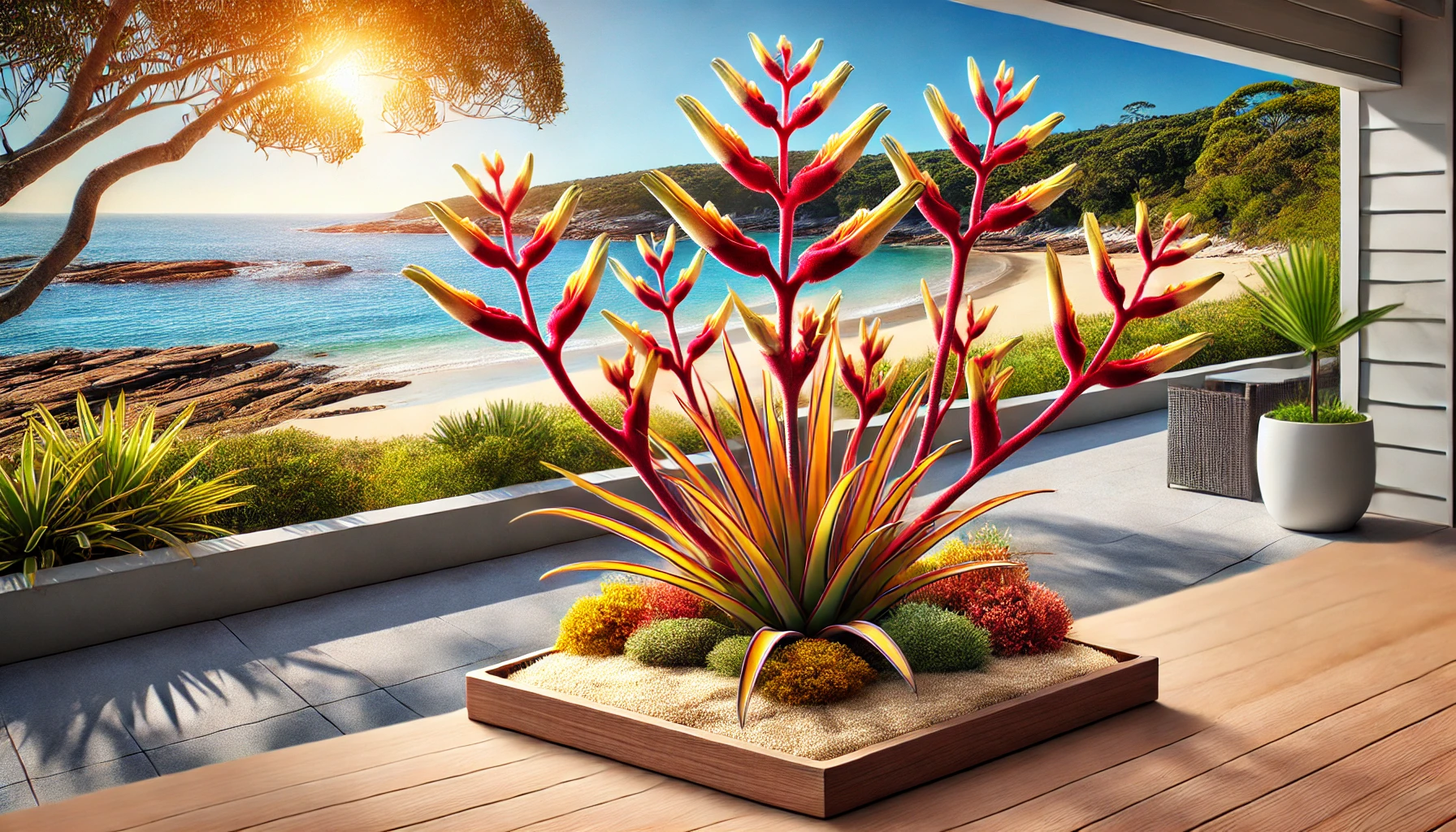
Kangaroo Paw, formally known as Anigozanthos spp., is an eye-catching plant native to Australia, recognized for its unique, claw-shaped flowers that resemble a kangaroo’s paw. This perennial plant is known for its vibrant colors, which range from red and yellow to pink and purple. Depending on the species, Kangaroo Paw can grow anywhere from 1 to 10 feet (30 cm to 3 meters) tall, making it a versatile choice for gardens and landscapes.
History and Ideal Growing Conditions
Kangaroo Paw originates from the southwestern region of Australia, where it thrives in the dry, sandy soils and warm climate. It was introduced to gardeners worldwide for its striking appearance and adaptability to different climates. This plant loves full sun and well-drained soil, making it perfect for xeriscaping or drought-tolerant gardens.
For best results, plant your Kangaroo Paw in an area that receives at least 6 hours of direct sunlight daily. While it can tolerate mild frost, it prefers temperatures between 60-80°F (16-27°C). If you live in a cooler climate, consider growing it in containers that can be moved indoors during the colder months.
Toxicity and Pets
Kangaroo Paw is non-toxic to dogs, cats, and other common household pets, making it a safe choice for pet-friendly gardens. You can plant it confidently, knowing it won’t pose any harm to your furry friends.
Best Practices for Caring for Kangaroo Paw
Watering and Humidity
Kangaroo Paw is drought-tolerant once established, but regular watering during the growing season will encourage better flowering. Water deeply once or twice a week, allowing the soil to dry out between waterings. During particularly hot spells, you may need to water more frequently. This plant prefers low humidity, which mimics its native Australian environment.
Soil, Light, and Temperature
Kangaroo Paw thrives in well-draining, sandy soil with a slightly acidic to neutral pH (6.0-7.0). It enjoys full sun and requires at least 6 hours of direct sunlight for optimal growth and flowering. The plant can tolerate temperatures as low as 50°F (10°C) but performs best in warmer conditions. If you live in an area with heavy clay soil, consider planting in raised beds or containers to improve drainage.
Fertilizing
Fertilize your Kangaroo Paw with a slow-release, low-phosphorus fertilizer in early spring, just before the growing season begins. This will provide the nutrients needed for robust growth and vibrant flowers. Avoid high-phosphorus fertilizers, as they can harm the plant. An additional light feeding during the blooming period can help sustain flower production.
Common Problems and Remedies
Kangaroo Paw is generally a hardy plant, but it can occasionally suffer from root rot if overwatered or planted in poorly drained soil. To prevent this, ensure the soil is well-draining and avoid excessive watering. Rust fungus is another common issue, often appearing as orange spots on the leaves. Treat rust by removing affected leaves and applying a fungicide.
Pruning Tips for a Healthy Kangaroo Paw
Pruning is essential to keeping your Kangaroo Paw looking its best. Regular pruning encourages new growth, prolongs blooming, and helps maintain the plant’s shape.
Tools and Preparation
Use sharp, clean pruning shears for trimming your Kangaroo Paw. Sanitize your tools before and after pruning to prevent the spread of disease. A solution of one part bleach to nine parts water works well for this purpose.
Identify Areas to Trim
Remove any dead, damaged, or diseased leaves as soon as you notice them. Prune back spent flower stems close to the base to encourage the plant to produce more blooms. If the plant becomes too leggy, trim back the stems by one-third to encourage bushier growth.
Post-Pruning Care
After pruning, water the plant deeply and consider adding a light layer of mulch around the base to retain moisture and regulate soil temperature. This will help the plant recover and promote healthy new growth.
Propagation and Benefits
Kangaroo Paw can be propagated by division or from seed. To propagate by division, dig up the plant in early spring or late fall, and carefully separate the rhizomes. Replant the divisions in well-drained soil, and water thoroughly. Propagating from seed is also possible but requires patience, as it can take several weeks for seeds to germinate.
In addition to its stunning appearance, Kangaroo Paw attracts pollinators such as birds and bees, making it a valuable addition to any garden focused on supporting local wildlife.
Final Thoughts
Kangaroo Paw is a unique and hardy plant that can add a splash of color and an exotic touch to your garden. With its easy-care nature and non-toxic qualities, it’s a fantastic choice for gardeners of all levels. By following the tips in this guide, you’ll enjoy the vibrant blooms of Kangaroo Paw for many seasons to come.



